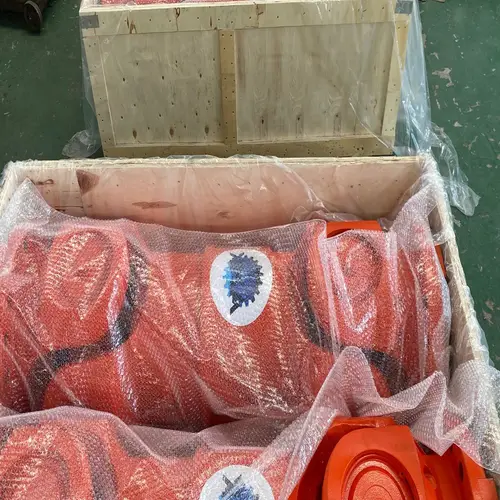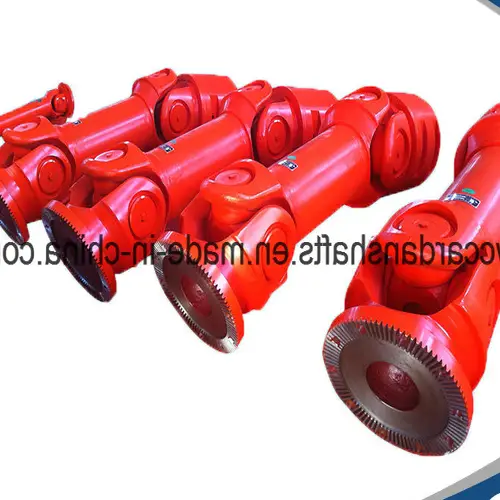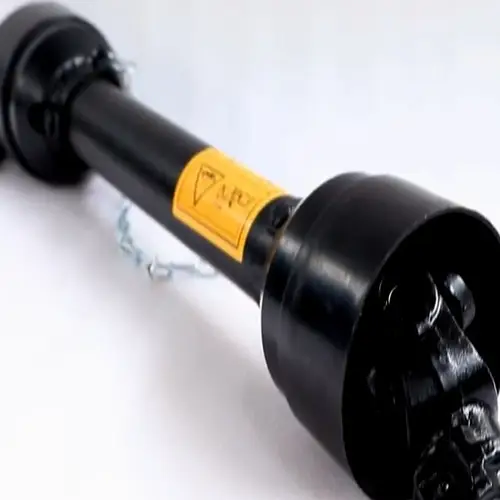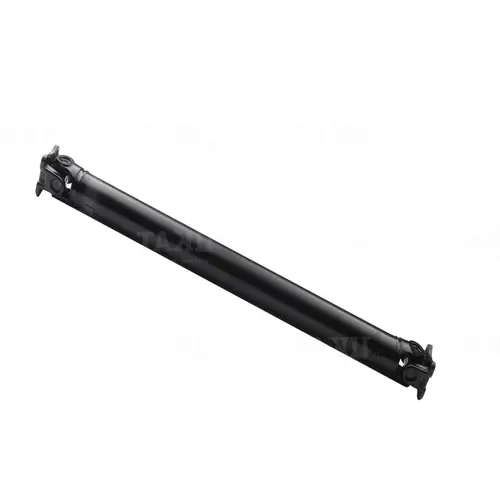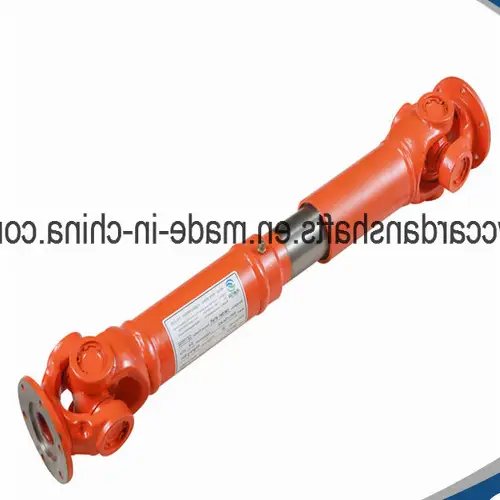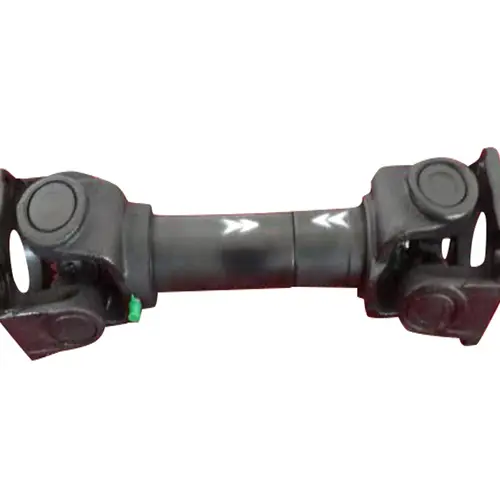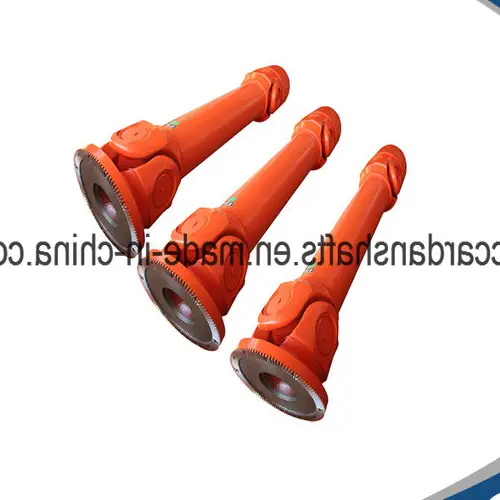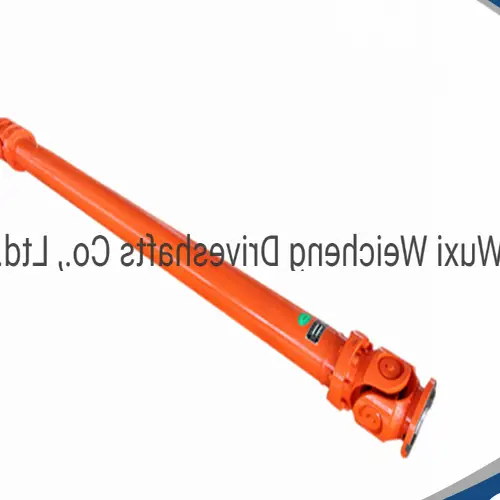
China OEM Cardan Shaft Universal Joint Shaft for 40 Piercing Mill Driving Air Compressor
Product Description
The Cardan Shaft Universal Joint Shaft is an essential component used in 40 piercing mill driving systems, renowned for its durability and high performance. Engineered for heavy-duty industrial applications, this shaft ensures reliable operation and longevity.
Brief Introduction
Designed to meet stringent industry standards, our Cardan shafts are crafted from high-quality alloy steel, ensuring strength and resilience under the most demanding conditions. The advanced casting and forging processes further enhance the durability and performance of our products.
Processing Flow
Our meticulous production process includes rigorous quality control measures at every stage, from raw material selection to final inspection. Each Cardan shaft undergoes a series of tests to ensure it meets our high standards.
Quality Control
Quality is our utmost priority. We implement a thorough quality control system to ensure that every product delivered meets our customers’ specifications. This includes detailed records of nonconformity, comprehensive customer feedback management, and the use of first-class production equipment, including CNC machines and machining centers.
Technical Specifications
| Structure | Type E | Flexible or Rigid | Rigid | Standard or Nonstandard | Standard |
| Material | Alloy steel | Model | SWC225E-1800 | Length | 1800mm |
| Flange DIA | 225mm | Nominal torque | 56KN.m | Coating | Heavy duty industrial paint |
| Paint color | Customization | Application | 40 piercing mill | OEM/ODM | Available |
| Certification | ISO, TUV, SGS | Price | Calculates according to model | Custom service | Available |
Packaging & Delivery
Packaging details: Standard plywood case
Delivery detail: 15-20 working days, depending on the actual production condition
Other Product Businesses
EVER-POWER GROUP offers a broad array of industrial products, including agricultural gearboxes, power output shafts, sprockets, fluid couplings, worm gear reducers, gears and racks, roller chains, pulleys and pulleys, planetary gearboxes, timing pulleys, and bushings. We pride ourselves on providing high-quality products at competitive prices with exceptional customer service. Custom drawings and samples are welcomed to meet your specific needs.
FAQs
Q1: What materials are used in the Cardan shaft?
A1: Our Cardan shafts are made from high-quality alloy steel, ensuring maximum strength and durability.
Q2: Can I customize the Cardan shaft?
A2: Yes, customization options are available. You can customize the paint color, length, and other specifications to fit your needs.
Q3: How long is the delivery time?
A3: The delivery time is typically 15-20 working days, depending on the current production schedule.
Q4: What quality control measures are in place?
A4: We have a comprehensive quality control system that includes detailed records, customer feedback management, and the use of advanced production equipment.
Q5: Do you offer other industrial products?
A5: Yes, EVER-POWER GROUP offers a wide range of industrial products, including gearboxes, sprockets, fluid couplings, and more, all customizable to meet your specific requirements.
All the content of the page is from the Internet, the content is only as a reference for product selection, our products are replacement parts and not original spare parts; we are not the holder of the original trademarks of the content, our products are only suitable for after-sales replacement parts and not original spare parts, our replacement parts can be perfectly adapted to the original spare parts; if you need to buy original spare parts, please contact the original factory to buy. If you want to buy original spare parts, please contact the original supplier for purchase.
Performance Characteristics of Cardan Shaft
The Cardan shaft is an essential component in various mechanical systems. Here are its key performance characteristics:
- High Torque Transmission: The Cardan shaft can transmit high levels of torque, which is crucial for heavy-duty applications.
- Flexibility: It offers significant flexibility, accommodating misalignments in the mechanical system without compromising performance.
- Durability: Made from robust materials, the Cardan shaft exhibits excellent resistance to wear and tear, ensuring long service life.
- Vibration Dampening: Its design helps in reducing vibrations, leading to smoother operation of the machinery.
Types and Characteristics of Cardan Shaft
There are several types of Cardan shafts available, each designed for specific applications:
- Single Cardan Shaft: Simple and cost-effective, suitable for applications with minimal misalignment.
- Double Cardan Shaft: Provides better performance in terms of reducing vibrations and accommodating greater misalignments.
- Constant Velocity (CV) Shaft: Ideal for high-speed applications, offering consistent rotational speeds without significant vibration.
The materials used in manufacturing Cardan shafts also play a crucial role:
- Steel: Most commonly used, offering excellent strength and durability.
- Aluminum: Lighter than steel, providing improved fuel efficiency in automotive applications.
- Composite Materials: These offer a balance of strength and weight reduction, ideal for aerospace applications.
Application of Cardan Shaft in Various Industries
The Cardan shaft finds applications across different industries due to its versatile characteristics:
- Automotive Industry: Used extensively in drivetrain systems to transmit torque from the engine to the wheels.
- Aerospace Industry: Essential in control systems for helicopters and other aircraft, providing reliable power transmission.
- Marine Industry: Vital for the propulsion systems in ships and boats, ensuring efficient power transfer.
- Industrial Machinery: Helps in the smooth operation of heavy machinery and manufacturing equipment.
- Agricultural Equipment: Used in tractors and other farming machinery for effective power distribution.
Future Development Trends and Opportunities of Cardan Shaft Products
The future of Cardan shaft products is promising, with several trends and opportunities emerging:
- Advanced Materials: The development of new materials will enhance the performance and reduce the weight of Cardan shafts.
- Improved Manufacturing Techniques: Advances in manufacturing processes will lead to more precise and efficient production of Cardan shafts.
- Integration of Smart Technologies: Incorporating sensors and smart technology will allow for real-time monitoring and maintenance.
- Growth in Electric Vehicles: The rise of electric vehicles presents new opportunities for Cardan shaft applications in innovative drivetrain systems.
These trends indicate a bright future for Cardan shaft products, with continuous improvements and expanding applications.
How to Choose a Suitable Cardan Shaft
Choosing the right Cardan shaft involves careful consideration of several factors:
- Determine Application Requirements: Understand the specific needs of your application, including the type of machinery and expected performance.
- Evaluating Power Requirements: Ensure the shaft can handle the power output of the machinery.
- Check Speed and Torque Specifications: Verify that the shaft can operate within the required speed and torque limits.
- Measuring the Length of the Shaft: Accurate measurements are crucial for proper fit and function.
- Evaluate Connection Type: Ensure the shaft’s connections are compatible with your machinery.
- Check Safety Features: Consider the safety mechanisms in place to prevent failures and ensure safe operation.
Conclusion
The Cardan shaft is a critical component in many mechanical systems, offering high torque transmission, flexibility, and durability. Its applications span across various industries, including automotive, aerospace, marine, industrial machinery, and agricultural equipment. The future development trends and opportunities for Cardan shaft products are promising, with advancements in materials, manufacturing techniques, and smart technologies. By carefully considering application requirements, power needs, speed and torque specifications, shaft length, connection types, and safety features, one can select the most suitable Cardan shaft for their needs.
Author: Dream
